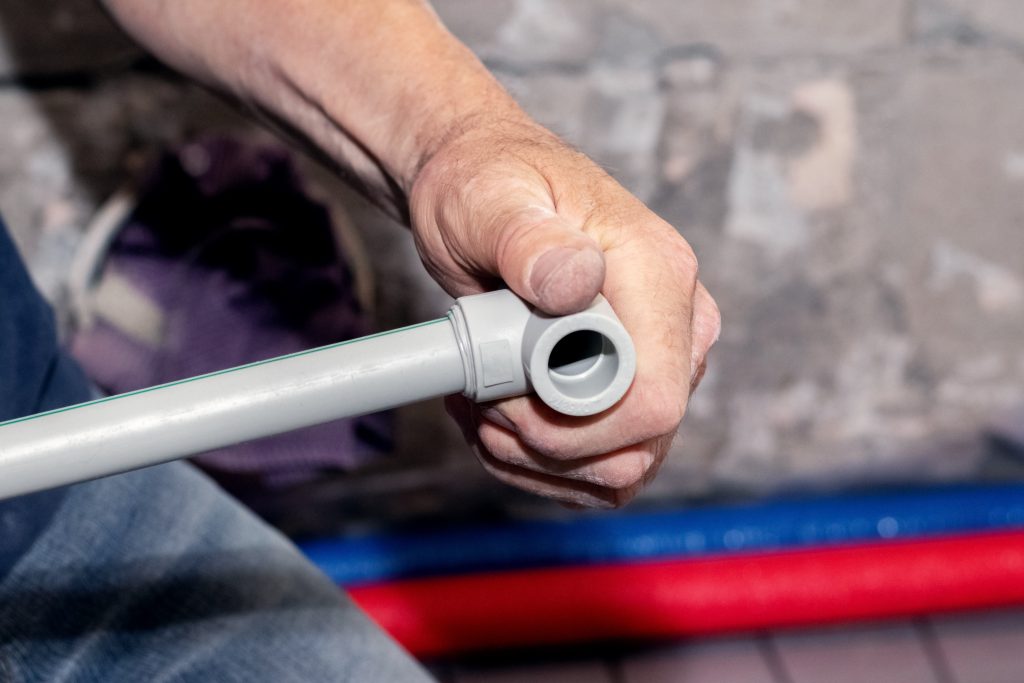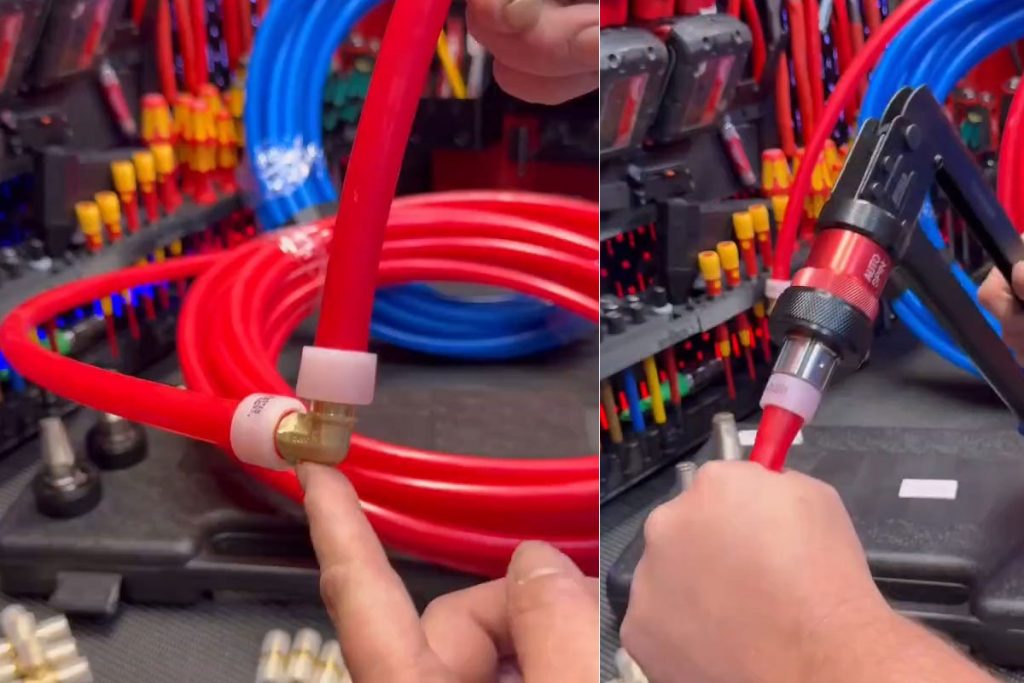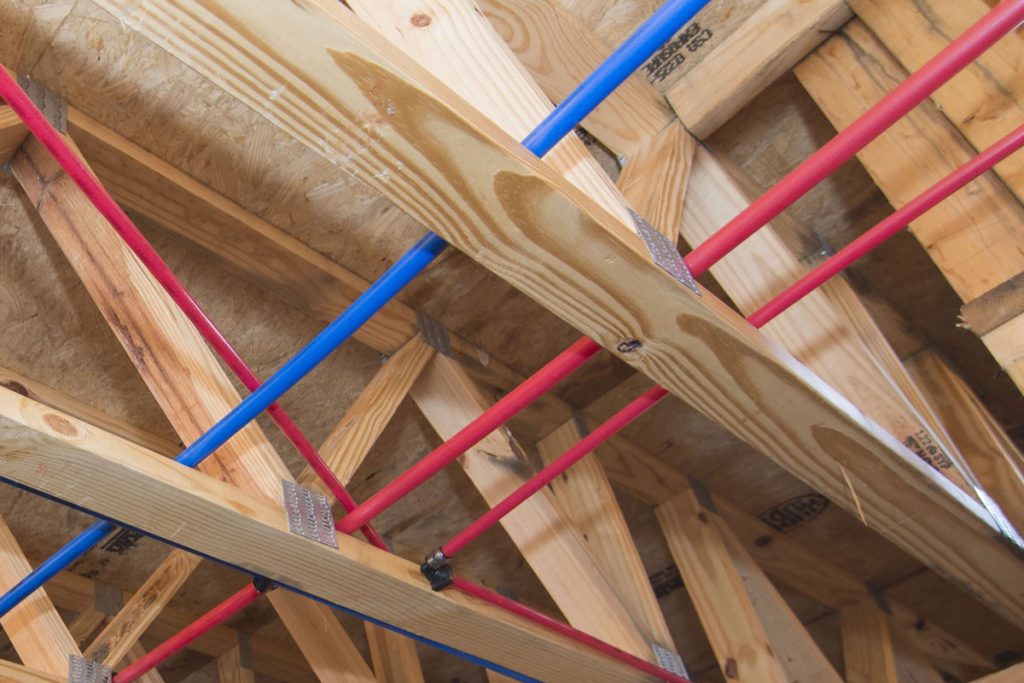When setting up for an outdoor plumbing project, choosing the right type of water line is crucial for ensuring long-term durability, efficient water flow and resistance to harsh weather. The variety of pipe options may seem overwhelming, especially if it is your first time working on an outdoor project. Whether you are installing outdoor faucets or an entire water supply system, the pipe will directly impact the system’s performance and lifespan.
Among the most common options for water lines, including copper pipes, PVC and galvanized steel pipes, PEX pipe has become more popular for both residential and commercial plumbing systems. The various sizes it has, such as 1-inch PEX pipe, 1/2-inch ones and more, have made it a suitable option for outdoor applications. This article will guide you through the different types of pipes used for outdoor water lines and how to find the best fit for your project. If you’ve made up your mind on the type of PEX pipes to go with, check out PlumbingSell to get the best deal.
Table of Contents
Different types of pipes for outdoor usage
Copper Pipes
Copper pipes are known for their rigid, high-pressure resistance and long lifespan. They are ideal for exposed outdoor installations as their capability to withstand UV rays is better than most plastic pipes. However, copper pipes are not as corrosion-resistant as PEX pipes, and both materials and installation processes could be more expensive. In certain soil conditions, they tend to corrode quickly. Not to mention that soldering is a must-have step for copper pipe installation, which makes it less practical for long underground runs and harder for future maintenance.
PVC Pipes
PVC pipe is a budget-friendly option; it is often used for irrigation systems and underground water lines. This type of pipe is not recommended to be used for hot water or pressurized water, as it could lead to serious damage to the pipes. While it works well for low-pressure and cold-water applications, it is not as flexible as PEX pipes, making it more prone to cracking in extreme weather conditions. The installation process of the PVC pipes could be tricky for those who are new to plumbing. It needs to be glued together with special PVC glues, which could be hard to match and tighten up. Learn more about the difference between PEX and PVC pipes here.
PEX Pipes
PEX (cross-linked polyethylene) pipes have gradually become one of the most popular selections for both commercial and residential plumbing projects. If you are not familiar with this type of material, have a look at our articles about the must-know facts of PEX pipes. They are popular for their flexibility, durability and resistance to corrosion and freezing. Unlike rigid copper pipes, PEX-A tubing and PEX-B tubing can expand, which helps reduce the risk of cracking in cold temperatures. Their resistance to corrosion has also ensured that they won’t rust or degrade over time, even when buried underground.
Another key advantage of PEX pipes is their ease of installation and maintenance, especially for PEX-A pipes. As PEX-A pipes are the most flexible type among the three types of PEX pipes, fewer fittings are required for installation. This has made them the perfect choice for DIY homeowners and professional plumbers. One-inch PEX-A pipe is the popular choice for outdoor water lines, providing sufficient water flow and residential supply. However, PEX pipe is not UV-resistant and must be protected from direct sunlight to prevent degradation.
Why Choose PEX Pipe for Outdoor Water Lines?
When it comes to installing an outdoor water line, PEX pipe is one of the best options. Compared to traditional materials like copper or PVC, PEX offers superior performance in terms of durability, flexibility, ease of installation and resistance to corrosion. Here’s why PEX pipes are an excellent choice for outdoor applications.
Freeze Resistance & Flexibility
One of the biggest challenges with outdoor water lines is the risk of freezing, especially in colder climates and extreme weather areas. Unlike rigid pipes that can crack under freezing conditions, PEX pipes are able to expand when water freezes inside them; either 1/2-inch PEX pipes or 1-inch PEX pipes, they are less likely to burst, which reduces the costly repairs and maintenance. Additionally, PEX-A’s superior flexibility allows it to bend around obstacles, requiring fewer fittings and making installation easier to prevent potential weak joints in the piping system.
Cost-Effective & Easy Installation
PEX pipe is more affordable than metal materials like copper or steel, making it a budget-friendly choice for outdoor plumbing projects. Compared to PVC pipes, they are easier to install. All three types of PEX pipes, PEX-A, PEX-B and PEX-C, require fewer fittings compared to both PVC and metal pipes. As for PEX-A pipes, you will need specific expansion tools and fittings for connection. But in general, PEX pipe installation is quite straightforward and requires fewer professional skills and tools. This allows both DIYers and professional plumbers to install 1-inch PEX pipes outdoors quickly with minimal specialized tools and experience.
Long Lifespan & Low Maintenance
PEX pipes have an expected lifespan of 40 to 50 years, making them a valuable long-term investment. They can remain durable and reliable in harsh environments with proper installation and protection if required. Compared with other types of pipes, PEX pipes are less likely to degrade and burst in extreme weather, making them perfect for outdoor usage in cold areas. To maximize longevity and performance for residential plumbing projects, it’s best to install a 1-in PEX pipe underground or in shaded areas to prevent prolonged UV exposure while ensuring sufficient water pressure.
Tip: If you are looking to install a longer water line or are shopping for PEX in bulk, check 1-inch PEX-A pipe 100ft bundle, 1/2-inch PEX-A pipe 200ft bundle and more at PlumbingSell to find the best deal.
Choosing the Right PEX Pipe
Selecting the right type, size and length of PEX pipe is essential to ensure durable, optimal water pressure and efficiency for your outdoor water line. A 1-inch PEX pipe is a popular choice for residential water applications as it provides a strong flow rate while maintaining flexibility and durability. If you are working with a small repair or connecting short distances, such as connecting the faucet to the dishwasher, then a 1-inch PEX pipe 10ft is sufficient. However, if you are planning on large-scale installations such as underground water lines or whole-property supply systems, a 1-inch PEX pipe 200ft will be your go-to choice.
For projects that require highly flexible PEX pipes, we recommend using PEX-A pipes. Although they are the most expensive of the three PEX pipes, they are the most flexible and durable ones with the fewest fittings required. They are also easier to repair and maintain compared to other types of pipes. If you want to learn more about PEX-A pipes, check out our newest articles.
Conclusion
Choosing the right pipe for an outdoor water line is important. While traditional materials like copper and PVC have their advantages, PEX pipes have become one of the top choices due to their superior flexibility, freeze resistance, cost-effectiveness and long lifespan. Whether you need a 10ft 1-inch PEX pipe for small repairs or 600ft 1-inch PEX pipes for larger installations, PEX provides a reliable and easy-to-install solution for outdoor plumbing. When selecting PEX pipes, make sure to consider the types, sizes and lengths to ensure optimal performance. For high-quality PEX pipes at competitive prices, check out PlumbingSell, where you can find a wide selection of EFIELD PEX supplies for all your outdoor plumbing needs.



